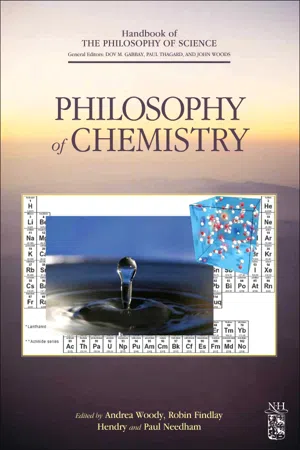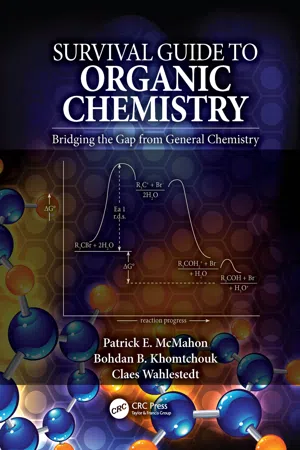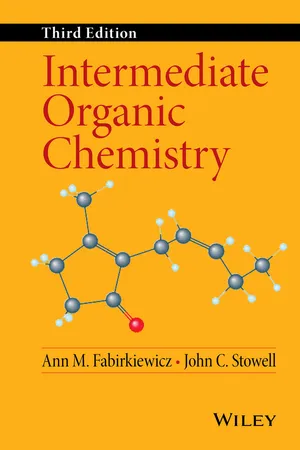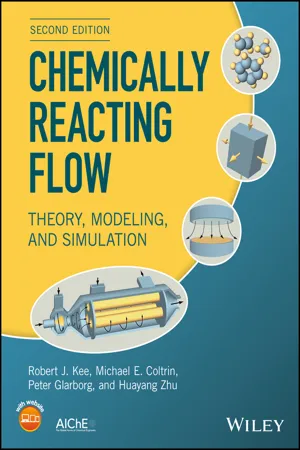Chemistry
Drawing Reaction Mechanisms
Drawing reaction mechanisms involves depicting the step-by-step process of a chemical reaction. This includes identifying the reactants, intermediates, and products, as well as the bonds that are formed and broken during the reaction. The use of arrows and symbols helps to illustrate the movement of electrons and the flow of energy throughout the reaction.
Written by Perlego with AI-assistance
Related key terms
Related key terms
1 of 4
Related key terms
1 of 3
4 Key excerpts on "Drawing Reaction Mechanisms"
- eBook - ePub
- Dov M. Gabbay, Paul Thagard, John Woods(Authors)
- 2011(Publication Date)
- North Holland(Publisher)
Gould, 1959 , p. 127]. This is what one might expect, given the explanation above of why thin mechanisms suffice for developing an understanding of organic chemistry. Second, these mechanisms break a chemical reaction down into a sequence of steps. For instance, Lowry and Richardson say: “A reaction mechanism is a specification, by means of a sequence of elementary chemical steps, of the detailed process by which a chemical change occurs” [Lowry and Richardson, 1987, p. 190]. These two features of mechanisms are related and both are important to the role of mechanisms in understanding chemical reactions.Providing information about the important intermediate structures in a transformation, such as the transition state or stable intermediates, allows the organic chemist to perform structural analysis of the relative energies of these intermediates. A structural analysis, in turn, enables one to predict or explain relative energy differences between structures based on a small set of robustly applicable and easily recognizable structural features. These relative energy differences can then, with the aid of the standard theoretical models of chemical transitions, be used to infer important empirically measurable features of chemical reactions such as relative rates or product distributions. 7 In this way, structural analyses of the relative energy differences between important intermediates in the course of a chemical transformation are the modern realization of Butlerov's goal to explain all the chemical properties of substances on the basis of their chemical structures. 8 - eBook - ePub
Survival Guide to Organic Chemistry
Bridging the Gap from General Chemistry
- Patrick E. McMahon, Bohdan B. Khomtchouk, Claes Wahlestedt(Authors)
- 2016(Publication Date)
- CRC Press(Publisher)
Guide to Kineticsand ReactionMechanisms9
9.1 GENERAL CONCEPTS
9.1.1 REACTION MECHANISMS
- A reaction mechanism is an accepted sequence of elementary reaction steps which describe all (based on available information) bond-making and bond-breaking events characterizing the change of reactant molecules to product molecules.
- A reaction step (or elementary step) is the smallest observable change in molecular bonding, an individual bond-making, bond-breaking , or combination event (simultaneous bond-making and bond-breaking) that can be distinguished experimentally from other such events.
- The complete reaction mechanism may be composed of only one step or many steps depending on the overall (complete) reaction and the conditions.
- A reaction mechanism, along with the parameters that describe it such as rate, activation energies, and intermediates (described in other sections) is a path function . A path function is dependent on the “pathway” or method by which a change occurs. Regardless of the numerical value or sign of the free energy change, a reaction can occur only if there exists an available pathway by which reactant molecules can be converted into product molecules.
- Path functions must be distinguished from state functions such as ΔG, ΔH, and ΔS. These depend only on the initial and final states of the system: the total energies of the reactants versus the products. State functions do not depend on how the reaction changes occur.
- All reactants and products in a complete reaction or in a single reaction step must exist as an independent species for some measurable amount of time. This existence is due to the presence of energy barriers blocking “instant” decomposition. The compound is considered to be in a “potential energy well” (i.e., a stable energy “valley” similar to a rock sitting in a hole) termed a local energy minimum . A “deep” hole represents a very stable molecule (slow to react) because the energy barriers on each side are high. A “shallow” hole represents a relatively
- eBook - ePub
- Ann M. Fabirkiewicz, John C. Stowell(Authors)
- 2015(Publication Date)
- Wiley(Publisher)
4 MECHANISMS AND PREDICTIONSWhen planning a new reaction in organic chemistry, we look at the accumulated information on similar reactions in order to predict the best conditions for it. The more we know about the intimate details of the reaction process at the molecular level, the better will be our predictions. A particular reaction may be described as an ordered sequence of bond breaking and making and a series of structures that exist along the way from starting material to product. The description includes the concurrent changes in potential energy. Structures at energetic maxima are called transition states and structures at minima are called intermediates. The complete description is called the mechanism of the reaction.4.1 REACTION COORDINATE DIAGRAMS AND MECHANISMS
The energy-structure relationship is sometimes illustrated with a plot of potential energy versus progress along the pathway of lowest maximum potential energy. This is exemplified in a general way in Figure 4.1 . The plot shows a two-step reaction leading from reactants through a first transition state to intermediates. The intermediates pass through a second transition state to products. The net overall descent for this reaction corresponds to an exothermal process.Reaction coordinate diagram.Figure 4.1A reaction that requires a higher rise to a transition state (activation energy) will be slower than one requiring a lesser rise (if the probability factors are similar) because a smaller fraction of collisions will provide sufficient potential energy to make it.The energy values for such plots are derived from measurements of overall exo- or endothermicity and from measurement of the effect of varying the temperature on the rate of the reaction (Section 4.3.6 ).Many techniques have been developed for determining mechanisms including complete product (and sometimes intermediate) identification, isotope labeling, stereochemistry, and kinetics [1–3], as are covered in Section 4.3 - eBook - ePub
Chemically Reacting Flow
Theory, Modeling, and Simulation
- Robert J. Kee, Michael E. Coltrin, Peter Glarborg, Huayang Zhu(Authors)
- 2017(Publication Date)
- Wiley(Publisher)
CHAPTER 14 REACTION MECHANISMSChapter 13 discussed the theory of elementary reactions. The chemical processes occurring in chemically reacting flows usually proceed by a series of elementary reactions, rather than by a single step. The collection of elementary reactions defining the chemical process is called the mechanism of the reaction. When rate constants are assigned to each of the elementary steps, a chemical kinetic model for the process has been developed.Using a chemical kinetic model is one way to describe the chemistry in reacting flow modeling. The chemical kinetic model offers a comprehensive description of the chemistry, but it requires a larger computational effort than simplified chemical models.The present chapter discusses the development and use of detailed reaction mechanisms in modeling reacting flows. Developing reaction mechanisms requires attention to some “collective aspects of mechanisms," such as the driving forces for gas-phase chemical processes and the characteristics and similarities of different reaction systems.For illustration, selected medium to high temperature gas-phase processes are discussed in some detail. Gas-phase reactions at elevated temperature are important in combustion, incineration, flue gas-cleaning, petrochemical processes, chemical synthesis, and materials production. Although the details of these systems may vary significantly, they share characteristics that are common for all gas-phase reaction mechanisms.14.1 Models for Chemistry
In chemically reacting flow systems, the overall reaction rate may be limited by the mixing rate of the reactants or by the rate of the chemical reaction upon mixing. If mixing is slow compared to chemical reaction, the system is diffusion or mixing controlled, while fast mixing and slow reaction results in a kinetically controlled system (Fig. 14.1 ).Figure 14.1
Index pages curate the most relevant extracts from our library of academic textbooks. They’ve been created using an in-house natural language model (NLM), each adding context and meaning to key research topics.
Explore more topic indexes
Explore more topic indexes
1 of 6
Explore more topic indexes
1 of 4



